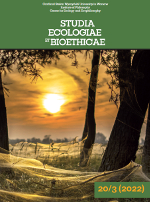Urban Thermal Comfort - Reality and Challenges
Urban Thermal Comfort - Reality and Challenges
Author(s): Aneta Afelt, Wojciech Szymalski, Kamil LeziakSubject(s): Energy and Environmental Studies, Environmental and Energy policy, Human Ecology
Published by: Wydawnictwo Naukowe Uniwersytetu Kardynała Stefana Wyszyńskiego w Warszawie
Keywords: city topoclimate;spatial planning;human thermal stress;adaptation to climate change;health-One Health
Summary/Abstract: The city is characterised by a specific climate. Depending on the type of land use, the characteristics of the land cover, such as colour and the permeability of the surface, or the construction materials used in the urban space - there are locally large horizontal and vertical differences in air temperature in the city, defined by the local energy balance of the surface area. The varies are represented by the topoclimatic units. Each of the topoclimatic types can be characterised by a specific sensitivity to the occurrence of high air temperature, which has its direct impact on the parameters of thermal bioregulation of an individual living in the urban space. The analysis of topoclimatic conditions is presented on the example of two towns near Warsaw: Mińsk Mazowiecki and Wołomin. We then demonstrate the relationship between topoclimate and human thermal stress under conditions of high and extremely high air temperature. We present how targeted actions in urban space can shape topoclimates and consequently mitigate the effects of heat waves. These measures are of considerable importance in the context of adaptation to forecast climate change. In our opinion, modelling of human thermal stress should be one of the key parameters in spatial planning, among others, as a part of health risk management.
Journal: Studia Ecologiae et Bioethicae
- Issue Year: 20/2022
- Issue No: 3
- Page Range: 46-60
- Page Count: 16
- Language: English

